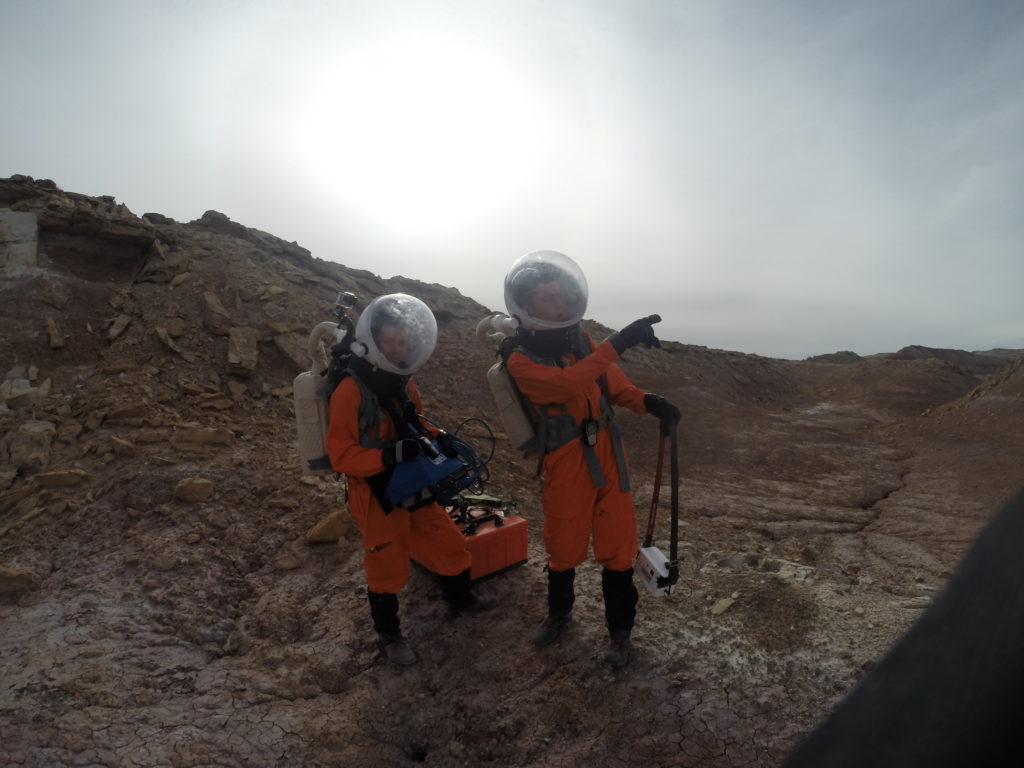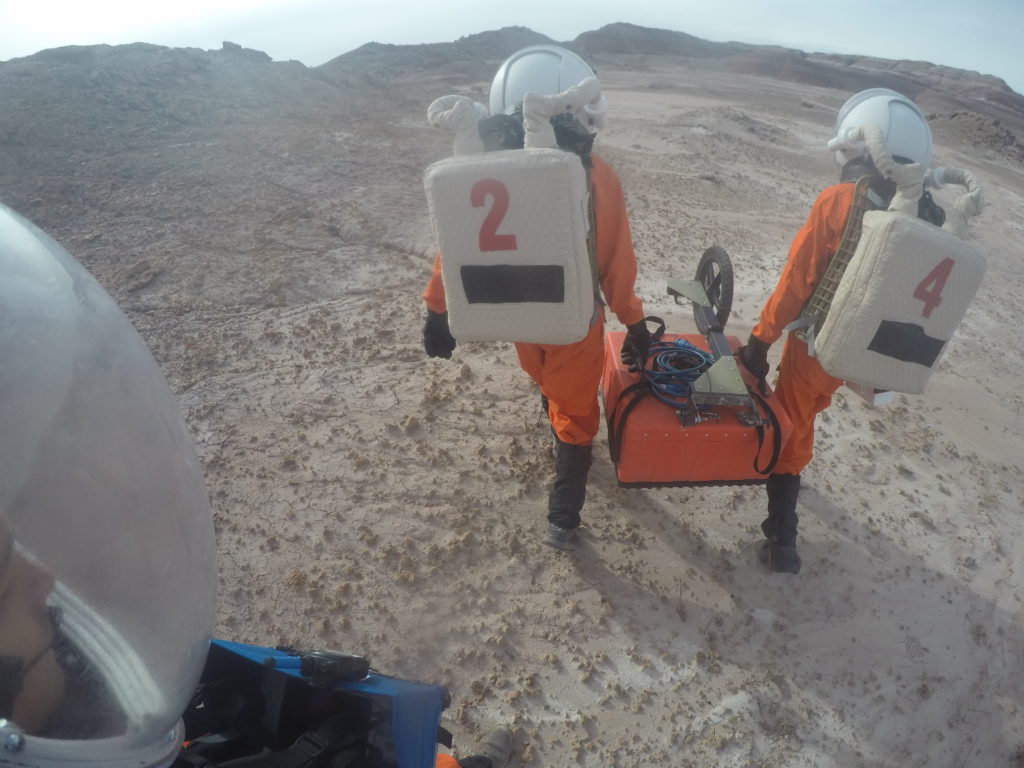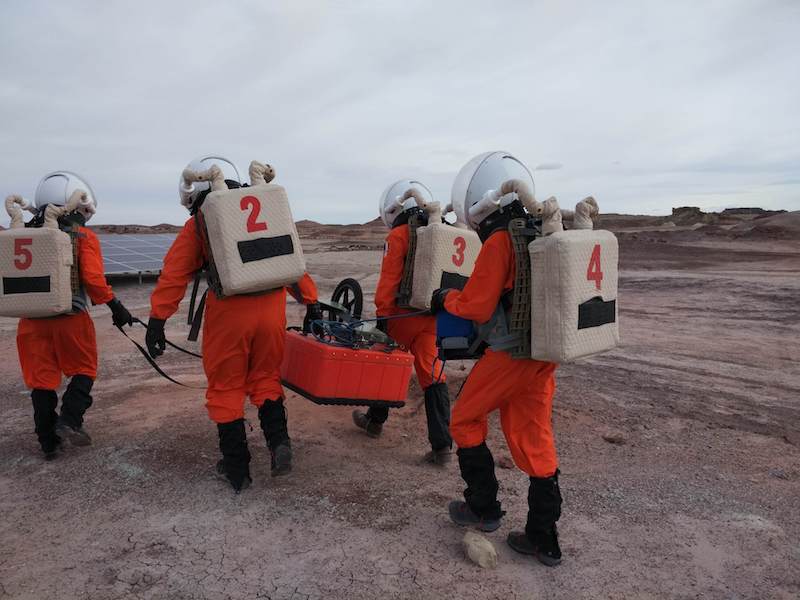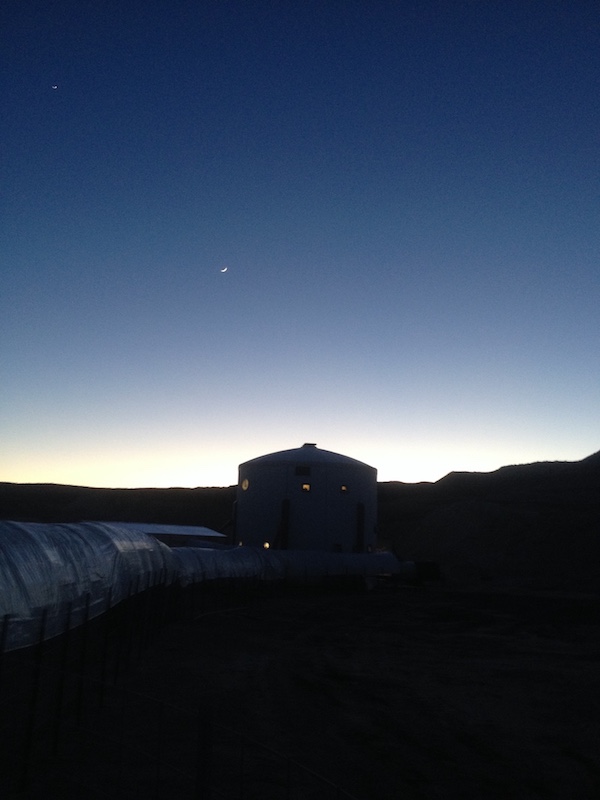Sol 1
Commander Report Crew 172
Ilaria Cinelli – Commander, Crew 172
Sol 1: Finally, we did it!! Let’s rock this mission!!
Today it is our first day on Mars (Sol 1). This mission is a two-week simulation during which we will be
training for the Mars mission in an analogue environment, here in the stunning Utah desert. You
might think is a short time. Believe me, this mission has started six months ago!
MDRS selected six young enthusiastic space talents as my Crew members and me as Commander.
Being Commander is a full-time job that starts as soon as MDRS gives you the approval for the
mission.
The quality of the mission depends on the quality of the remote training before getting in the Hab. I
have been spending six months training my Crew in remote teaching them their duties, the analogue
life rules and learning about their goals and personalities. The human-side of the mission should not
be neglected considering that we are an international team of strangers.
The goal of this training is to teach them that we are a unique entity and that their actions has
consequences for each member. As Commander, I must make sure that each of them is on the right
track both in their duties and as individual.
My goal is training in leadership for long-term mission. I have been spending all my free time to learn
leadership and practice it at my best. A Commander without a competent Crew is a lost soul. I am
honoured to cover this role and proud of my Crew!
Although the considerable number of responsibilities I have here, I am not going to step back for any
bloody reason! I will rock this mission to its unique goal: successful!
Because we are a unique entity, below the ambitious of each member. They are part of what I am
now, and I would like you to read their view as well!
Pierrick Loyers – Crew Scientist, Crew 172
Personal point of view:
I have been waiting for 8 months for this mission, so I am really excited to be here. My first
impressions here are really positive. Being at MDRS is well immersive. Landscapes, EVAs and protocols
are challenging and I really like it. I am happy that we are going to be out of our comfort zone, this is
really exciting.
Being in a crew makes me feel really comfortable. Everyone is happy to help for the daily tasks and
that’s pretty good. There is a good atmosphere here, we are joking with each other and this is a good
point as well. I feel like everyone is very much involved in their roles. I’m sure that we are going to be
a great crew, productive, efficient and soldered.
Technical and personal objectives:
Gwendal and me are going to evaluate the possibilities for astronauts to do a 3D cartography of Mars.
We have designed and engineered a device that takes altimetry measurements in regards to the
position of the astronaut on Mars. The position of the astronauts is measured thanks to signals
triangulations and altimetry measurements are performed with a barometric sensor. Measurements
are done during EVAs. The astronaut has to carry the cartography system on him and measures are
taken while he is moving during the EVA. Once the EVA finished, a file containing all the X, Y and Z
coordinates is transferred on a PC and results will be investigated on Matlab. A 3D map will then be
produced on the software called Blender.
We have developed a HUD that is displaying all the useful information on the right eye of the
astronaut, a bit like the Google glass. This allows the astronaut to visualize measurements and his
position hand free.
This device is also able to communicate with a PC at the Hab thanks to a long-range radiofrequencies
communication system that we have developed. The PC is receiving real-time information about the
astronaut on EVA like position, altitude, outside temperatures. The Hab would also be able to
communicate in RF with the astronaut by sending short messages through our system in case of radio
failure. Messages are displayed on the HUD of the astronaut.
The second objective is to investigate possibilities for astronaut to search for underground water
thanks to a Ground Penetrating Radar (GPR). We are going to probe the soil near zone where we
believe there are water sources.
My personal objectives are to understand and feel what are the protocols, goals and difficulties that
astronauts will face on Mars at the horizon up to 2030. I am happy to live in a harsh environment
during two weeks and that was part of my personal objectives as well.
Goals:
I would like to work within the manned space exploration field after my studies and that’s why I
applied to be part of the MDRS experience. Specialized in Applied Physics and passionate by space
since I’m young, it would be great to combine these two specialties. But I have also a strong interest
for space structures. I would be proud to take part to the international efforts to take humans to
Mars.
Anushree Srivastava – Executive Officer and Crew Biologist, Crew 172
I am on Mars, again! It feels wonderful saying that.
I recently completed the first phase of a 160 sols simulation of a Mars mission – Mars160 – an
ambitious and unprecedented endeavor of The Mars Society. Now, I have joined the Crew 172. For
this mission, to my great delight, I am the Executive Officer and Crew Biologist for another 15 sols.
It is Sol 1. Before coming here as Crew 172, I was asked many times that why do I want to do this
rotation when I had already been part of a mission like Mars160 which had its historical culmination,
even in its first phase. My answer has always been simple – there is no obligation, of course; but I still
want to do it. It is important for me. When you don’t wear the spacesuit, when you don’t live under
the constraints of a Martian life, you miss it. As I keep saying, it’s a privilege that not everyone has the
opportunity to have. I was appointed to be the Crew Biologist for Mars160 mission and Crew 172 at
the same time. And I had decided that I will come back to join the Crew 172. The first phase of
Mars160 mission was intense. In summer 2017, we are initiating our second phase at FMARS in the
Canadian Arctic, which is going to be the real test of living in a simulated Martian condition that
involves lots of preparation. Having said that, for me, Crew 172 is an important attempt towards
exposing myself to the inherent discreteness of the nature of two different missions. This mission is
also my attempt to test the flexibility in my approach towards the crew and the overall mission
objectives. I say this because I realized the emotional intricacies involved in this transition. You came
back to live in the same place for 15 sols, where you recently completed 80 amazing sols, but with the
different crew. You keep missing the presence of your previous crew, who actually became a family.
Then you have many conversations with yourself, reminding yourself that this is what it takes to be
able to live on Mars – it tests your preparedness and patience.
The members of the Crew 172 are young and enthusiastic! They are equipped with advanced
technology that they intend to test in the simulated Martian environment. What exhilarates me the
most is their eagerness and excitement to experience the adventure of extra-vehicular activities
(EVAs) for the very first time in their lives. I am happy to see them getting carried away by the
spectacular landscape. I echo their emotions. At the same time, I am learning from them in so many
ways.
From the perspective of science operations, I intend to continue my work on documenting the
pattern and diversity of halophilic microorganisms that started during Mars160 mission. Shannon
Rupert, the principal investigator of the Mars160 mission, and I are interested in isolating highly salt
tolerant microorganisms from soil samples collected during multiple strenuous EVAs during Mars160
mission. We intend to perform the molecular analysis of those peculiar salt-loving microbes using
MinION. So, as Crew Biologist, this is the objective of my sojourn on Mars! Additionally, I am engaged
in different human factor experiments proposed by my fellows of Crew 172.
Patrick Gray – GreenHab Officer, Crew 172
Plans and Ambitions:
My project goal while at MDRS is to have a harvest in the GreenHab, document the GreenHab
facilities to set future researchers up for success, and share all possible information with the
GreenHab crew to bring in their expertise. My personal objective is to maximize the experience and
learn from my fellow crewmates, I am interested in doing longer term research analogs and
expeditions in other environments in the future and thus want to thoroughly document any issues
and key observations that I can carry forward both for myself and to share with the Mars Society.
Finally, I want to document our adventures and share our story in an educational outreach capacity
over the next year. This work feeds directly into my professional work and ambitions. My long-term
goal is to build a bridge between scientific marine exploration and space science to push forward life-
seeking exploration on and off Earth.
Gwendal Henaff – Executive Officer & HSO, Crew 172
I am French student pursuing a Master of Science in Applied Physics. I am passionate about space
exploration since the childhood. I am looking forward for this mission : at first, we have scientific
experiences to carry, which are quite new for MDRS : we have a Ground Penetrating Radar, and that
allow us to scan the subsurface, 2D and 3D, up to 15 meters deep. I have two objectives here : first,
get enough data to precisely localize the water lenses under the surface, as well as work on the
human factors linked to the use of a GPR on Mars, which is quite challenging : we have 20 Kg
Antennas, and a heavy control unit, which is not easy to use with a space suit.
My ambitions for the simulation is to be the closest possible to a real Mars mission, an objective that
the all crew is sharing. Being the closest possible to real conditions will be good for our scientific
experiences and will be personally rewarding. As a Emergency First Responder on Earth, my role as
HSO makes sense : We will work on first response training and practice with the crew.
I am looking for an intern position in the US, in space engineering. Being part of this crew will be
definitely by useful : years after years, I have more and more space related experiences (Internships in
French and UK’s space laboratories, working on space instrumentation and nano engineering), Space
international competitions and the latest CNES / ESA scientific Parabolic Flight campaign I was part of.
After graduation, I plan to work 14 months as an engineer in Antarctica, and being part of this crew
will allow me to know if I am ready for such a long isolation mission in a harsh environment.
Troy Cole – Crew Engineer
Personal Point of View of MDRS: I think MDRS is an awesome opportunity to get some real field
experience in a realistic environment and I am grateful for being selected for this crew. Speaking
specifically as a working professional I greatly appreciate the shorter duration missions that are more
conducive with my work schedule.
Personal Technical Objective: My personal technical objectives are to test myself to see if I have what
it takes to be an effective field engineer working in a remote location and to see if I can handle the
psychological stress of being out of communication with civilization.
Goal: My ultimate goal is to do my part to make space travel available to everyone on this planet and
setting the stage for humanity becoming a multi-planetary civilization. I intend to do this through
continued work on propulsion technologies.
Nicholas McCay – Crew Journalist, Crew 172
My objectives for this MDRS analog simulation is to document as much of the mission as possible. My
role as journalist is to communication to the outside world about the importance of our mission.
Taking photos and videos, interviewing each crew member about their motivations and projects, and
eventually compiling all the mediums for distribution.
My goal from this analog mission is to leverage my MDRS experience to get back into journalism –
specifically Science & Space. Writing and covering the industry full time is my ultimate goal.















